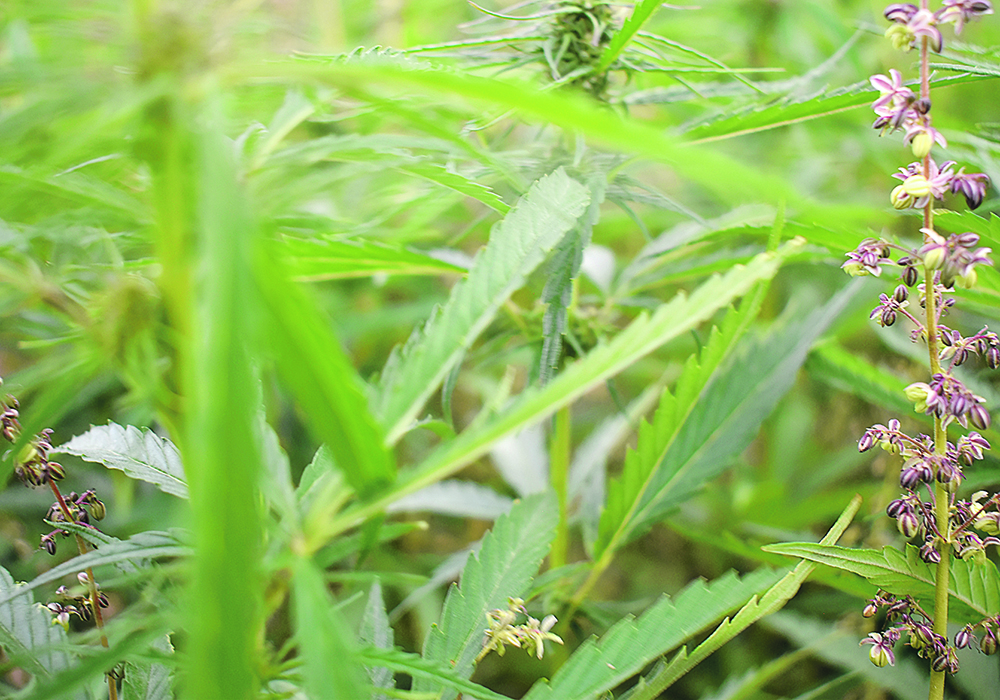Group says recent grant will help it become a one-stop shop for information about the crop and develop export markets
Plans to create a billion-dollar hemp industry in Alberta have taken a step closer to reality thanks to a grant of more than $300,000, says an advocate.
Many farmers prefer to grow crops such as canola because they are paid more money for them.
Manny Deol, executive director of the Alberta Hemp Alliance, which received the grant, said this is largely because the supply chain for hemp is still being developed in the province.
“Right now, we are growing under 40,000 acres in Alberta, and so the hemp alliance’s main role is to increase that growth within the next 10 years.”
Read Also

Feds propose overhaul of chronic wasting disease control program
Chronic Wasting disease control program getting updated by Canadian Food Inspection Agency with feedback encouraged from producers.
The two-year grant is being provided by the Canadian Agricultural Partnership, which is a federal-provincial initiative aimed at strengthening the country’s agri-food and agriculture sectors.
“Supporting the burgeoning hemp industry is important because it will provide producers new market opportunities and a way to diversify their rotation with this alternative crop,” federal Minister of Agriculture Marie-Claude Bibeau said in a statement by the Alberta government.
“From seed to straw, the opportunities to sell this crop are growing, with value-added products ranging from food to biofuel to bioplastics and construction materials.”
The alliance is a non-profit organization formed in 2019. Deol said the grant will help it become a one-stop shop for information on hemp for everyone from farmers to agri-businesses.
“It will be the information source for people to know how to grow the crop, to where to sell, so we’ll connect basically from seed to sale, like bring buyers in so people know where to buy and they can make their own contacts with growers.”
The alliance will also be looking at developing export markets for the province’s hemp.
Hemp is a type of cannabis that lacks the psychoactive properties of marijuana because it only produces 0.3 percent or less of tetrahydrocannabinol (THC). However, a licence to grow industrial hemp is still required by Health Canada, which is something the alliance will be working on to end, said Deol.
Because as many as 50,000 products can be made from hemp, it has the potential to spark a billion-dollar industry in Alberta within 10 years, he said.
“It is environmentally friendly — it has more carbon sequestration — so we want to work with farmers so they grow hemp, and then we’re working with processing people for the decortication and creating fibre.”
Decortication involves removing the tough woody interior, or hurd, of hemp stalks from the softer fibrous exterior, or bast.
“We can create all kinds of things (from bast) like insulation, building materials, textiles, and basically even (drinking) straws and forks and knives … and the hurd is used for horse bedding and animal bedding.”
Although the industry is also working on creating animal feed from hemp, the crop is already a source of food for people, said Deol, pointing to products such as hemp hearts. “It’s a very good nutritional breakfast.”
CAP has provided more than $950,000 in grants during the past three years to BioComposites Group Inc. (BCG) in Drayton Valley southwest of Edmonton. The company manufactures a range of products from hemp, including auto parts such as dashboards and door panels that have less weight and are biodegradable compared to traditional parts made of materials such as plastic.
“Hemp straw was previously just a waste product for growers,” chief executive officer Dan Madlung said in the statement. “We have built the biggest hemp processing hub in North America, creating value-added products that we market internationally.”
The company announced in December it now has a fully functional hemp decorticator. Due to the fact hemp stalks are almost impossible to break down with traditional farm equipment, the lack of such facilities in Alberta had created “a large bottleneck in the industry and slowed any major advancements in the hemp fibre value chain,” said a statement by the firm.
The decorticator will increase the growth of what the company described as a hemp fibre hub in Drayton Valley, helping promote the firm’s goal of rural revitalization. The company is also planning to build a new facility to decorticate hemp and flax, boosting the manufacture of insulation and green building products, said the Alberta government statement.
The project will take up to two years to complete, resulting in 100 full-time jobs as well as “crop diversification and income generation for farmers.” It will also result in as much as 100,000 tonnes of carbon sequestration during the first phase alone, said the statement.
Meanwhile, Canadian Rockies Hemp Corp. said earlier this year a project it was constructing in Bruderheim, Alta., northeast of Edmonton will be finished this summer, resulting in what it stated will be the largest hemp-processing facility in North America.
Other Alberta companies include Canadian Greenfield Technologies, a Calgary-based firm that is a world leader in whole hemp plant processing technologies, said a presentation by the alliance.
Hemp is grown mostly in southern regions — in Alberta it is grown in a belt along Highway 3 from Lethbridge to Medicine Hat, said Deol. However, there has been an increase in production in northern areas such as La Crete, he added.
Although hemp can be grown in much of the province, the longer hours of daylight in northern Alberta due to the region’s higher latitude could offer particular advantages, he said.
















